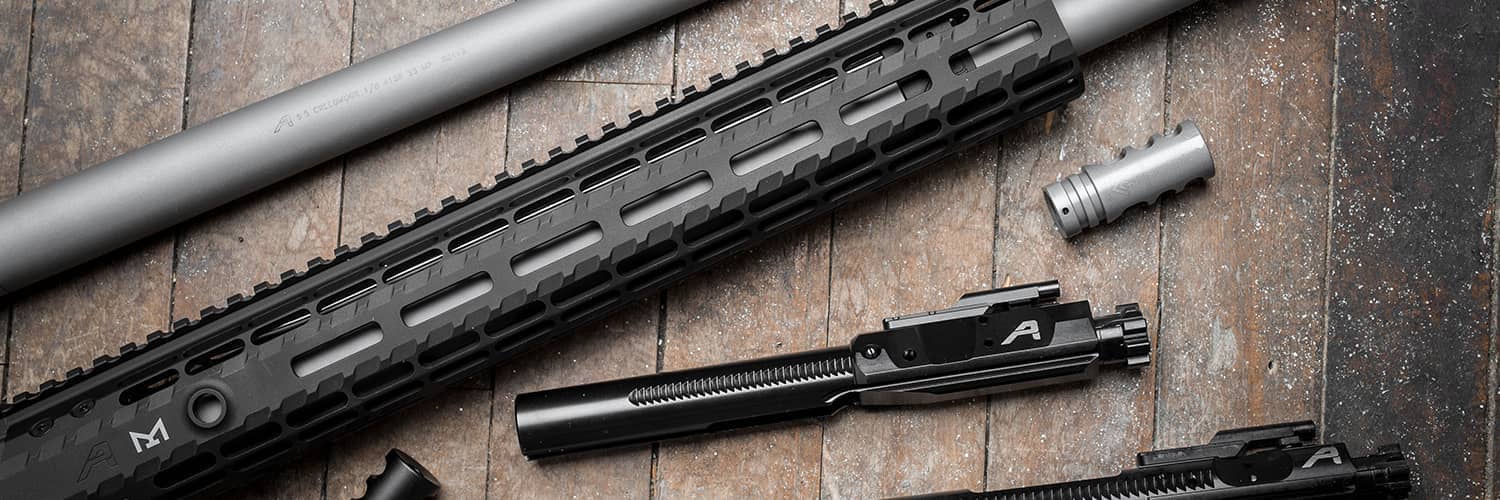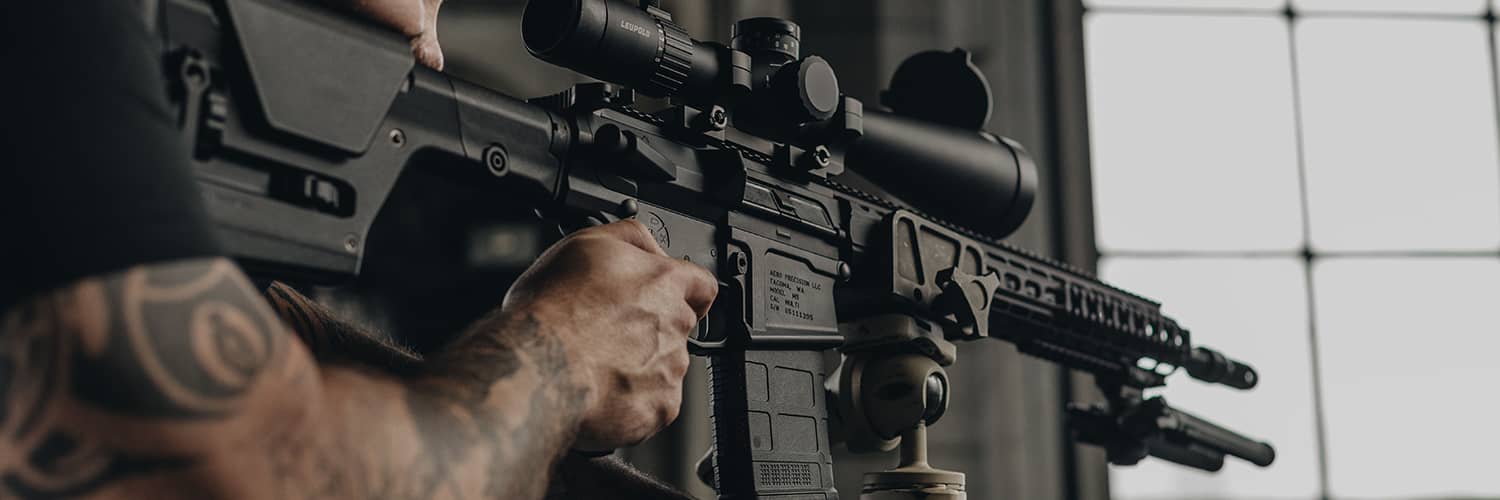
If you've just purchased a new barrel, you may be wondering how to ease into using it. Often, new barrels still have small amounts of oil or grease in them from the manufacturing process. The bore, or rifled hole, of your barrel may also contain tiny machining nicks, burrs and rough spots that can compromise accuracy and cause copper fouling before they're worn down by the friction of bullets passing through.
A barrel break-in is a controversial cleaning process that has caused a great deal of debate in the shooting community. Some gun owners believe barrel break-in maximizes precision and leads to easier maintenance down the road, while others think the practice is unnecessary. Similarly, some manufacturers suggest specific break-in procedures for their products, while others provide none.
Learn more about how to break in a new rifle barrel and the theory behind this practice from the team at Wing Tactical.
What Is a Barrel Break-In?
When a barrel is manufactured, the processes of drilling the bore and cutting the rifling and chamber often leave behind sharp edges, small burrs, rough spots and tooling marks. Some companies carefully lap and smooth the bore to remove as many of these marks as possible.
Many gun owners believe you must prepare new barrels by breaking them in, which works to remove these nicks and imperfections. During a barrel break-in, users will clean the bore, shoot a couple of rounds and then clean some more to remove any copper buildup from the bullets passing through. They repeat this process numerous times. The cycle of shooting and cleaning is similar to lead lapping, as it uses the pressure of bullets to gradually smooth rough areas within the barrel.
Those who think it's worthwhile to break in a barrel claim it minimizes the chances of copper fouling. Copper buildup present within the grooves of the bore can lead to poor accuracy and difficulty cleaning down the line. Breaking in a new gun aims to smooth the areas with the potential for trapping copper as a bullet travels down the bore, theoretically improving performance.
How many rounds it takes to break in an AR-15 is often up to the manufacturing quality that went into the barrel, with lower-quality models requiring more attention to minimize machine mark remnants.
What Do I Need to Break in My Barrel?
The breaking-in process includes many cleaning and firing sequences to smooth the bore. For those interested in breaking in a new barrel, there are some essential tools that you'll need to perform the process correctly and successfully. These supplies include:
- Solvent
- Brushes
- Ammunition
- Cleaning rod
- Cleaning patches
- Gun oil
- Bore guide
How to Break in a Barrel
Generally speaking, breaking in a barrel is a straightforward process involving repeated firing and cleaning. Switching between shooting and cleaning removes leftover gunpowder and any copper buildup that settled into rough spots in the barrel. There really isn't a single established way to go about breaking in your barrel, and many gun owners repeat the steps in varying orders or numbers of repetitions. However, some barrel manufacturers do suggest specific break-in protocols.
If you purchased a high-end barrel from a brand advocating the break-in process, it's wise to follow the exact instructions they provide for how to break in the barrel. If your barrel didn't come with specific directions, you can follow these steps to break in your new rifle:
- Step 1: Conduct an initial cleaning of your bore to ensure it's free of debris or solvents from the manufacturing process.
- Step 2: Fire your first shot.
- Step 3: Insert your bore guide and force a solvent-soaked patch from breech to muzzle. Ensure the solvent you use is formulated to tackle copper fouling, and repeat this step until no color shows on the patch. Three to five patches will usually be sufficient.
- Step 4: Soak a caliber-appropriate nylon cleaning brush in solvent and gently scrub the inside of your barrel. Insert the brush fully, letting the tip exit the muzzle before pulling it back toward you. You should continue swabbing for 10-20 passes through the bore.
- Step 5: Let the solvent soak for about five minutes before running a dry patch through the length of the bore.
- Step 6: Wrap a solvent-soaked patch around a nylon brush one caliber smaller than your barrel and insert it into the bore, swabbing back and forth around 20 times or until you no longer notice it picking up copper residue. Copper will have a blue-green tint on the patch. Follow the second brush with dry patches until they come out clean.
- Step 7: Fire two more shots.
- Step 8: Repeat steps three through six.
- Step 9: Next, shoot a three-shot group and repeat steps for cleaning in between each group. Replicate the firing and cleaning process with one additional shot per group until you reach 20 rounds.
Should You Break in Your Barrel?

The all-important question of whether you should break in your barrel has many differing opinions surrounding it. Some gun owners believe there is nothing to be gained through barrel break-in, while others regard it as an essential process. When you want to figure out if it's right for you, there are two primary factors to consider — how the barrel was manufactured and how you intend to use it.
Mass-produced barrels often come with more markings and imperfections in the bore, making a strong case for the break-in process. Higher quality, match-grade barrels are typically manufactured with more care, undergoing lead lapping after the rifling is cut to smooth any rough or uneven areas. Because of this, breaking in a premium barrel may accomplish very little. Plus, if your AR-15 barrel is cold hammer forged or chrome-lined, you probably won't be able to make it any smoother than it already is.
For general-use rifles, breaking in the barrel might be unnecessary. However, firearms used for precision competitions or long-range shooting will have greater accuracy requirements, and the slightest burr or rough area could affect the bullet's spin and trajectory to shift the point of impact. The break-in process could potentially help remove these imperfections, creating an interior surface ideal for precision and accuracy.
Recreational shooters may find that breaking in a barrel provides only minor — or unnoticeable — results. Still, in areas where accuracy is paramount, a barrel break-in might be a step worth considering. Your choice ultimately comes down to the quality of your barrel and whether you want to invest the time, solvent and ammunition in the break-in process.
Wing Tactical Is Your Go-to Provider for AR-15 Barrels, Parts and Accessories

Whether you're looking for a new AR-15 barrel or any other component, you can count on Wing Tactical to help you find the tools and parts you need for the ideal build. Our experts work hard to answer your questions and choose products that provide you with immense value at competitive prices.
Explore our inventory today to find and purchase the gear you've been searching for. If you have any questions, feel free to contact our knowledgeable staff.